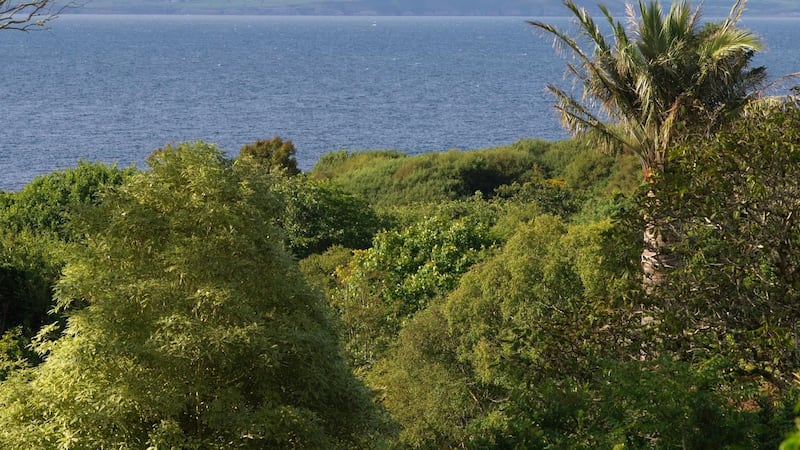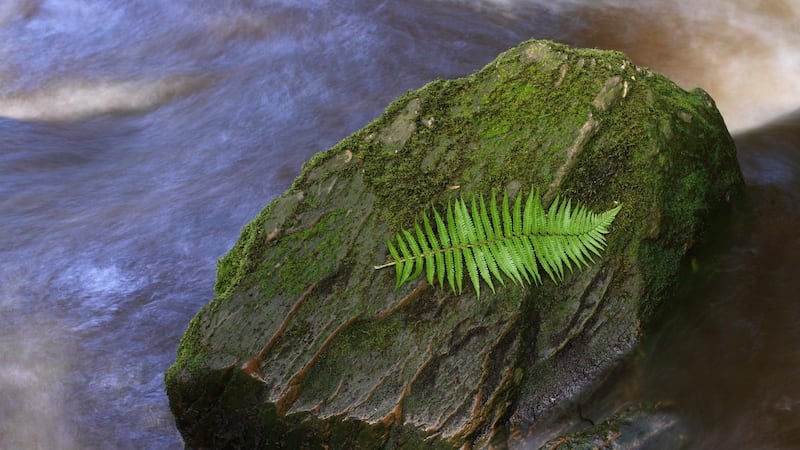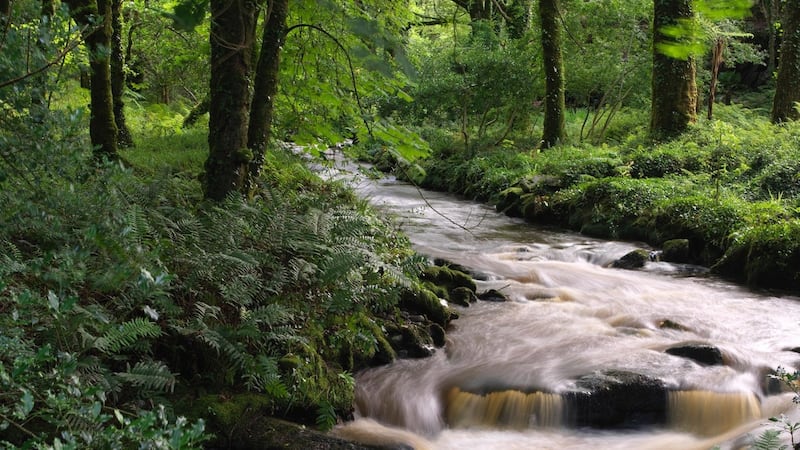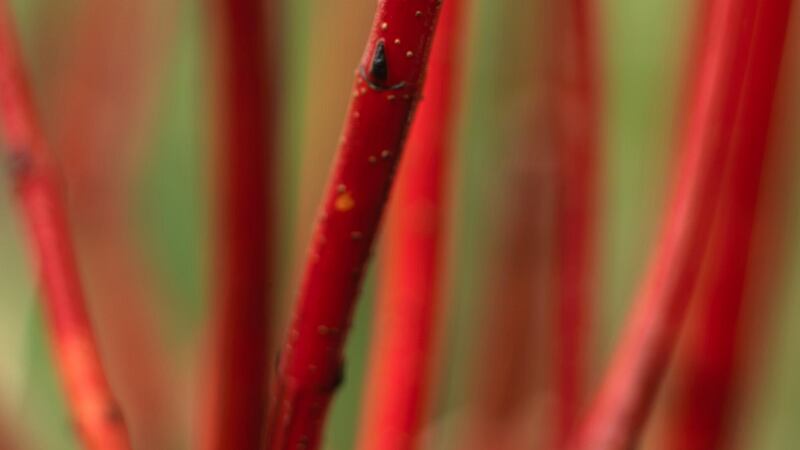If you’ve ever been to the sub-tropical gardens of Kells Bay in coastal southwest Kerry, then you’ll know it’s a place of rare beauty where peat-stained streams tumble through woodlands filled with giant tree ferns that stretch their emerald-green fronds high into the sky.
A burning passion for the world of ferns is what, in 2006 , led its owner Billy Alexander to buy Kells Bay's then-dilapidated Victorian hunting lodge and its 44-acres of wildly overgrown gardens. In particular it was the garden's remarkable collection of Australian tree ferns (Dicksonia antarctica) – thought to be the largest collection in the Northern hemisphere – that Alexander found so utterly seductive that he decided to buy the property.
Some were as old as the garden itself, having been planted by the Blennerhassett family in the second half of the 19th century. But to Alexander’s amazement, so conducive is Kells Bay’s exceptionally mild, damp microclimate to their cultivation that over time its oldest tree ferns had become naturalised and beneath their leafy canopy grew thousands more baby tree ferns for future generations to enjoy. For a fern-lover like Alexander, the opportunity to take on this magical garden he describes as “a sleeping giant” – proved irresistible despite the obvious challenges that it presented.

By anyone’s standards, those challenges were considerable. So while he bought the property in 2006, it would be 2012 before restorations were sufficiently advanced to allow him and his wife Penn (who now runs the garden’s excellent on-site Thai restaurant) to give up their jobs and make the permanent move to Kerry from their home in suburban Dublin.
Steely determination
It’s fair to say that many thought that the task they’d set themselves would be financially crippling as well as physically and mentally overwhelming. But Alexander’s steely determination and can-do attitude has proven the doubters wrong. In the twelve years since becoming its owner, and despite the punishing recession and a series of unusually harsh winters, he and his wife have completely transformed both house and garden.
Now lovingly renovated, Kells Bay’s Victorian hunting lodge provides luxurious rented accommodation for visitors to the garden, who come to marvel at its collection of giant, whiskery-trunked tree ferns and other choice ferns, trees and shrubs, including rhododendrons, magnolias and scheffleras. Kells Bay is also home to Alexander’s specialist nursery, which has slowly but surely earned a reputation in international horticultural circles for its exceptional range of . . . you’ve guessed it, ferns, as well as palms and other exotic hardy plants.

Indeed, such is the esteem in which it's held that Alexander has recently been given what most of the world's nursery owners regard as one of the industry's highest accolades, an invitation to exhibit in the RHS Chelsea Flower Show's Great Pavilion this coming May. Considered to be the beating heart of the world's most famous garden show, Chelsea's great pavilion is the place where many of the world's finest, longest-established nurseries – Hilliers, Burncoose, Jacques Amand, to mention just a few – exhibit every year. For Alexander, not only does it represent professional recognition of the highest order but also the chance to let the whole world know about his remarkable Irish garden.
“So many people sing the praises of Cornwall’s gardens yet what we have here at Kells Bay is unique, not only in terms of its amazing plant collection but also the setting . . . It’s located in an area of outstanding natural beauty, surrounded by the unspoiled landscape of the Ring of Kerry and overlooking Dingle Bay.”
His plan is to create a Chelsea exhibit that will be “a little piece of Kells Bay”, a sort of distillation of its wild, fern-filled, Robinsonian beauty. As for the logistics involved in bringing it to London, they are considerable. Alexander understands all too well the show’s famously stringent rules and the ultra-high standards it demands of all exhibitors. Chelsea’s judges will be looking for near-perfection in the shape of pristine plants, expertly grown and beautifully displayed, and Alexander means to give it to them.

Of course, one worry – the very same of every nursery owner who has ever exhibited at Chelsea – is the vagaries of the weather. “The worst-case scenario would be a late frost singeing young growth so I’m growing many of the plants for the show under glass where they’re getting lots of loving attention in the shape of regular feeds of liquid seaweed. I even talk to them every few days”, he says, only half-joking.
Precious cargo
Another challenge (and a large part of the overall cost) will be transporting his precious cargo of ferns, including species of Blechnum, Doodia, Todea, Microsorum, Lophosoria, Asplenium, Osmunda, Cyathea and Polystichum, safely to London without damage. “There are a few tree-ferns – including a lovely specimen of Cyathea cunninghamii (commonly known as the slender or gully tree fern) and Cyathea medullaris (commonly known as the black tree fern)– that are two to three metres tall, so it’s going to be a little tricky.”
The size of the exhibition space that he’s been allotted by Chelsea’s organisers is large – five by five metres – so Kells Bay’s head gardener, Polish-born Grzeg Zawlocki, will also be making the trip to London to assist Alexander in creating the display. He has even employed topiary expert James Crebbin-Bailey, a seasoned, award-winning Chelsea Flower Show exhibitor, to help ensure that the finer details of his display meet the high standards required for it to be in with a chance of winning gold. “Even something as small as a spelling mistake on a plant label would be enough to stop that happening.”
While he says he's happy simply to be exhibiting at Chelsea , a gold medal is clearly something that Alexander has in his targets. To help him make that dream come true, he's currently looking for financial sponsors to assist him in bringing a little piece of this magical Irish garden to the world's greatest garden show. If you think you can help him, then he'd love to hear from you (you'll find his contact details at kellsbay.ie).
Kells Bay Gardens are located near Kells, Cahirciveen, Co Kerry and are open daily to the public from 9.30am until dusk as is the garden's cafe and plant nursery.
This Week in the Garden
The colourful bare branches of some dogwoods (species of Cornus alba, Cornus sanguinea and Cornus sericea ) are one of the joys of the winter garden. To encourage mature plants to make plenty of fresh new growth so that you can fully enjoy this display again next winter, it’s a good idea to give them a hard pruning at this time of year before the plants burst into bud. Use a sharp secateurs or loppers to do so, cutting back to within 5-7.5cm off the ground and finishing off with a generous mulch of garden compost or manure around the base.

Some ornamental grasses – examples include Stipa gigantea, species of Cortaderia, Calamagrostis “Karl Foerster” and Deschampsia “Goldtau” also benefit from a hard prune at this time of year before they burst into new growth. Use a sharp shears to do so, wearing gloves to protect your hands from being hurt by their sharp leaf-blades.
If you grow peach, nectarine or apricot trees under cover of a glasshouse, polytunnel or conservatory, then it’s important to hand-pollinate the flowers when they open, as they’re far less likely to be pollinated by insects in early spring than later-flowering fruit trees. Use a small, soft artist’s paintbrush to do this, dabbing it gently into the centre of each flower. For hard-to-reach spots, tie the brush to a bamboo or broom handle to extend it.
Dates for Your Diary
Due to the popularity of Galway hotel Renvyle House's "Gardening Weekend" earlier this month with guest speakers and kitchen garden experts Joy Larkcom, Kitty Scully, Anya Gohlke and Klaus Laitenberger, a second has been scheduled for March 2nd-March 4th. The price of €195 includes two nights accommodation and meals, see renvyle.com for details.
Saturday March 2nd (from 10am), National Botanic Gardens, Glasnevin, Dublin 9, "Gardening for Wildlife" an RHSI seminar with guest speakers John Anderson (Keeper of the Gardens, Windsor Great Park), Niall Hatch of Bird Watch Ireland and landscape designer/ garden writer Peter Whyte, admission €80 including coffee/tea, student rate €40, see rhsi.ie for bookings.
















